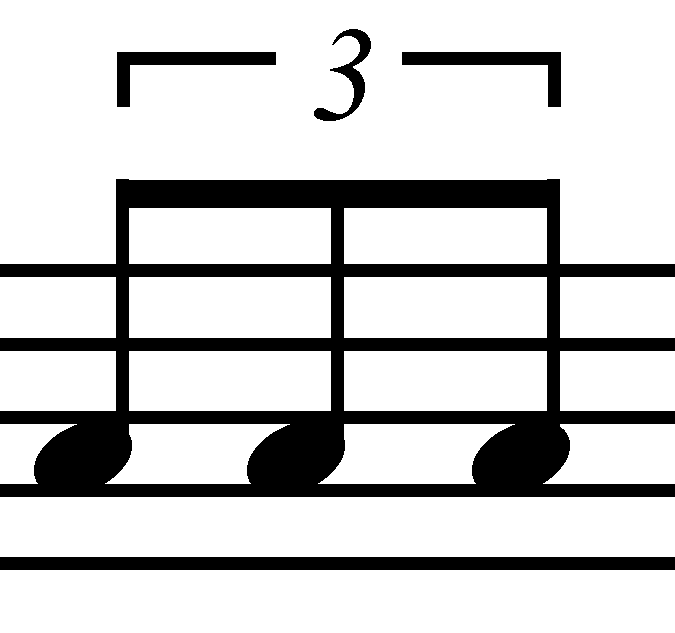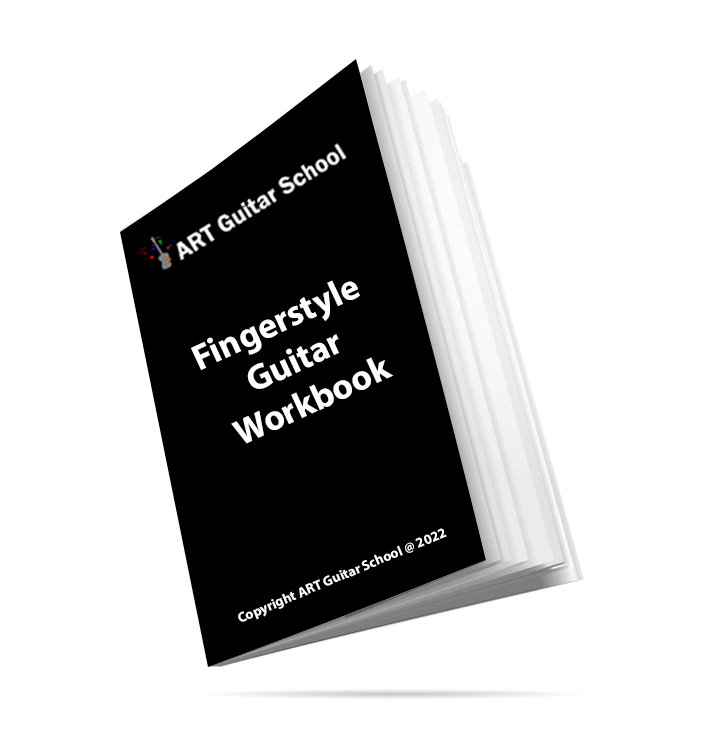One of the most common questions in regards to rhythm is how to play a triplet picking pattern. In order to do so you must first understand how a triplet works.
A triplet is split evenly into three parts within a quarter note. It’s like squeezing 3 eighth notes into one beat however, the duration of each is now slightly shorter due to the limited amount of time to fit each note within that beat.
Rhythm #1
Here is a quarter note pattern to start with. Pluck each note as one beat.
We added a half note at the end to fulfill the measure.

Rhythm #2
Now let’s try an eighth note pattern. Pluck two notes for each beat. They must fit evenly within the quarter note on the down and up beats.

Rhythm #3
Finally, this is the triplet pattern. I would recommend started by plucking only the first string with this rhythm. Count the rhythm as “one and ah, two and ah”.

Here is a video on popular finger picking patterns to start with:
If you were having trouble making the trip it’s even within the beat try using a metronome set a quarter notes 40 BPM and practice playing three notes within each beat.
FOLLOW US ON
Get our FREE Fingerstyle Workbook!
RELATED BLOG POSTS
Exploring Alternate Tunings for Fingerstyle Guitar
Alternate tunings open up a whole new world of possibilities for fingerstyle guitar players. In this post, we’ll explore popular alternate tunings and how they can enhance your fingerstyle playing.
What is Alternate Tuning? Alternate tuning refers to tuning the guitar strings to a different pitch than standard tuning (EADGBE). This allows you to create more resonant chords and access unique sounds.
Popular Fingerstyle Tunings
Drop D Tuning (DADGBE): Popular in rock and folk music, Drop D tuning allows for easy power chords and a deeper, fuller sound.
Open G Tuning (DGDGBD): Great for blues and folk styles, this tuning lets you play a G major chord with all strings open.
DADGAD Tuning: Often used in Celtic music, DADGAD creates rich, harmonic sounds ideal for fingerstyle arrangements.
How to Use Alternate Tunings Experiment with these tunings to discover new chord shapes, riffs, and melodic patterns. Each tuning can inspire unique compositions and variations in your playing.
Mastering Travis Picking: The Heart of Fingerstyle Guitar
Travis Picking is one of the most important techniques in fingerstyle guitar, especially for beginners. In this post, we will guide you through mastering Travis picking, a staple in folk, country, and blues guitar styles.
What is Travis Picking? Travis picking involves alternating your thumb between bass notes on the low strings while your fingers play the melody on the higher strings. This technique creates a smooth, rolling feel that’s characteristic of classic fingerstyle playing.
How to Start Start by practicing with simple patterns. For example:
Thumb (P) – 6th string (E)
Index (I) – 3rd string (G)
Thumb (P) – 4th string (D)
Middle (M) – 2nd string (B)
Gradual Speed Increase Start slow to ensure accuracy and consistency. Use a metronome to increase your speed gradually, and remember, the goal is to maintain clean, precise picking and rhythm.
Fingerstyle Guitar Exercises: Build Strength and Dexterity
If you want to master fingerstyle guitar, consistent practice is essential. In this post, we provide structured exercises to help you build finger strength, dexterity, and coordination.
Thumb Independence Exercises Start by practicing thumb-only exercises to develop independence between your thumb and fingers. Play simple bass lines while focusing on maintaining a steady rhythm.
Finger Coordination To improve your finger coordination, practice alternating between your thumb and fingers, playing simple patterns and focusing on smooth, fluid movement.
Speed and Accuracy Start slow, and gradually increase your speed while maintaining accuracy. Use a metronome to help develop timing and precision as you work through your exercises.




0 Comments